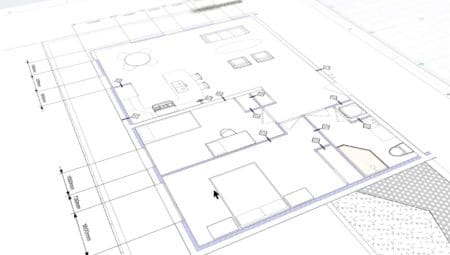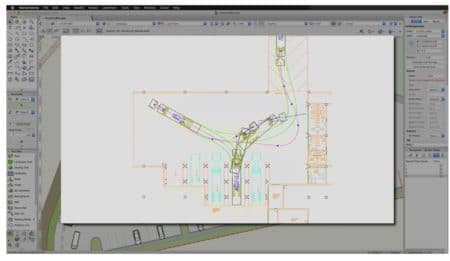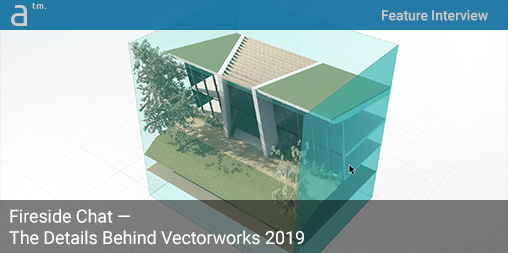Continued from page 1
Data Tags and Layer and Class Filtering
There are two new major sets of feature updates to existing technologies in Vectorworks in the new 2019 version. The first of these is how tags work for objects. The new Data Tags features are a wholesale rewrite of the way the user can tag data in their drawings, whether it is pulling data from an object type, like a door, or simply incrementing a particular tag that associates itself with none of the object’s data.
The key to the new Data Tag tool is its flexibility. Users have simplified ways of tagging all kinds of objects in their drawings and associating the type of data that appears with various attributes or incremented values. Tags also can now live in the annotation space and not just the design layers as in previous versions. It is also now possible to completely edit all tags within a particular family of tags at once or their incrementing numbering or lettering after they have been put down.
The calls in the VGM are established in such a way that it will be very easy to go to Vulkan or [Apple’s] Metal for that matter.
“In the earlier versions of Vectorworks every object had its own way of doing tags,” says Dr. Biplab Sarkar, “so we thought we would create a single [universal] tag system.” The old door and window objects still have their existing tag systems, but the user can choose not to use them and instead utilize the new data tagging system.
Another powerful new update involves the Classes and Layers system. Now in Vectorworks 2019, there are new ways to search and organize classes and layer groups in an intelligent way. The search bar helps users find just the layers and classes that matter to them at the moment.
Dr. Sarkar says that when people started using project sharing technologies in Vectorworks—a technology that enables an entire project to reside in a single file if you want—the number of layers and classes could get overwhelming. “You are basically creating a huge project,” he said, “and that can have several hundred layers and classes.”

03 – The new Data Tags system is a massive overhaul of the previous system providing far greater flexibility, speed, and power for all users.
When you import DWG files in particular, off the web, those DWG layers convert automatically to Vectorworks classes. This process adds even more classes which need to be either eliminated or organized and renamed. The new filtering technology greatly aids users to wrangle all this class and layer information intelligently.
Final Thoughts
Dr. Sarkar had several more items to talk about but these were the large big changes to Vectorworks in 2019. One smaller item of note is that the Revit interoperability in version 2019 uses the very latest ODA Platform API library from Open Design Alliance, but exporting to Revit from Vectorworks with this library is not supported yet as it is not very useful. “At this point, it is still triangles for now,” adds Sarkar, “it is just geometry and not intelligent objects.”
MORE: Open Design Alliance Announces Teigha BIM for Autodesk Revit
While architectural professionals may find usefulness in the Revit interoperability—particularly the importation of Revit objects from their consultants and suppliers—Vectorworks Architect 2019 includes robust support of open industry interoperability standard, IFC 2×3 to coordinate and collaborate with other BIM authoring tools. The company already supports IFC 4 and—along with other members of buildingSMART—are processing through their testing and certification processes. As a member of the Nemetschek Group, the entire group is working towards stronger integrations around Open BIM workflows and technologies and IFC is an important technology in that mission. Earlier this year Vectorworks announced some integrations around PDF workflows with its Nemetschek sibling company, Bluebeam Software.

04 – Transoft is the latest third-party API-based integrated tool to be added to Vectorworks, helping designers evaluate turning paths of vehicles.
Vectorworks is also working to expand the use of its API with third-parties. This year Vectorworks Landmark, Architect, and Spotlight 2019 includes integration with AutoTURN® Online. This continues API expansion working off of earlier third-party integrations like BIMobject and mTextur of Germany.
In closing, while the Vectorworks team can continue to build out and refine features, the company can also tap powerful new functions for users by leveraging third-party developers through their Vectorworks API. Vectorworks users win by gaining additional key new functions—like the verification of turning paths for vehicles in AutoTURN—while third-party developers gain by expanding their tools to large existing user bases.
Learn more about Vectorworks 2019 today here.




Reader Comments
Comments for this story are closed